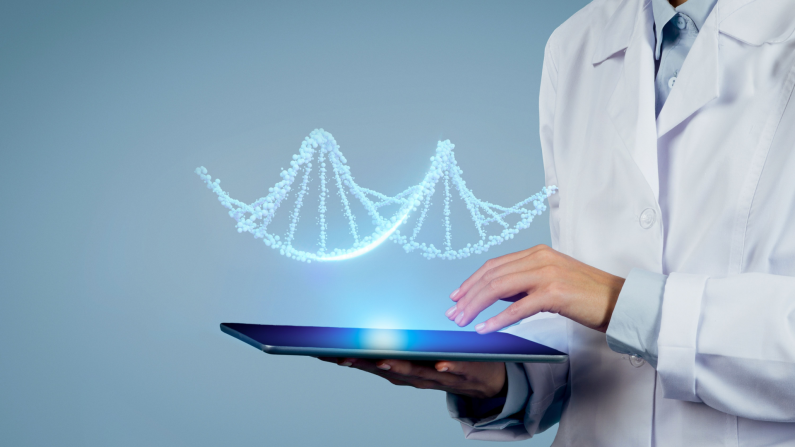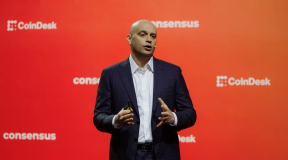In the 21st century, medicine is undergoing a true revolution — algorithms are replacing doctors, 3D printers are printing human organs, artificial intelligence is designing drugs, and for the first time, humans can control their own biology and literally hack their bodies. Our very attitude toward health, aging, and the process of life itself has changed. But what will be the result of this revolution? Is it the key to immortality, or just another form of dependence on technology?
How AI Helps Decode the Genome and Develop Drugs

Decoding the genome was once considered the pinnacle of science. The Human Genome Project, completed in 2003, took 13 years and cost nearly $3 billion. It was one of the largest and most significant scientific initiatives in human history. The goal of the project was to fully decode the human genome — that is, to determine the sequence of all three billion pairs of nucleotides that make up human DNA and to identify all the genes governing the structure and functioning of the organism.
Today, what once took a decade can be done much faster and cheaper — thanks to machine learning algorithms. Every genome is four letters (A, T, G, C) written in three billion base pairs. To decode it means to understand the meaning of this text, where errors can cost lives and combinations are endless.
And this is where artificial intelligence comes into play. Neural networks analyze mutations, identify correlations between DNA regions and diseases, and predict how the body will react to drugs. For example, in 2021, Google DeepMind introduced AlphaFold — a system capable of predicting the three-dimensional structure of proteins within hours, something biologists had been struggling with for decades. This became one of the most significant scientific breakthroughs of recent decades: now we can model how a protein “folds” and how its structure influences diseases.
Machine learning models are trained on millions of genetic profiles and clinical datasets to find patterns the human brain could never detect. Already today, algorithms can classify rare mutations, predict the risk of hereditary diseases, and even identify previously unknown genetic patterns linked to cancer, diabetes, and neurodegenerative disorders.
AI systems calculate potential molecules, their compatibility, and toxicity. Companies like Insilico Medicine, Atomwise, and BenevolentAI are already using generative models to design new compounds, while startups are developing algorithms that create drugs “from scratch” — just as a neural network writes music or text.
In China and the U.S., AI participates in analyzing oncogene mutations and selecting personalized therapies. Programs compare thousands of combinations of mutations, clinical data, and treatment responses. For physicians, this represents not just a new tool but a new philosophy of medicine — a shift from reactive to predictive: from “treating disease” to “preventing system failure.”
Researchers at the Broad Institute and MIT have created a system called EVE (Evolutionary Model of Variant Effect), which uses neural networks to assess which gene mutations may be pathogenic — that is, capable of causing disease. This model was trained not on specific clinical data but on evolutionary patterns: it “understands” which DNA variants occur more often in living organisms and which contradict the laws of survival. As a result, EVE has already helped refine the classification of thousands of mutations in the BRCA1 gene, associated with breast and ovarian cancer risks.
Biohacking and Personalized Medicine

If 20th-century medicine focused on an “average patient,” the 21st century emphasizes individualized solutions.
Personalized medicine is an approach to disease prevention, diagnosis, and treatment based on the unique characteristics of each patient. It adapts medical decisions and drugs to the patient’s specific genetic, biological, clinical, and environmental factors to improve the effectiveness and safety of treatment. Instead of a one-size-fits-all approach, it uses the data of a particular person to select the optimal therapy.
This has become possible thanks to:
-
genome decoding and DNA analysis,
-
AI that predicts drug responses,
-
digital biomarkers — wearable devices, sleep trackers, glucose and heart-rate sensors.
If personalized medicine is the domain of clinics and research centers, biohacking is the initiative of individuals striving to optimize their bodies and minds through technology.
Biohackers use the same tools:
-
genetic tests (e.g., 23andMe, Atlas, Genotek),
-
microbiome analysis,
-
neurofeedback, sleep and nutrition trackers,
-
supplements, hormonal and metabolic regulators,
-
and sometimes even DIY interventions, such as implants or CRISPR experiments.
Biohacking today is becoming a lifestyle. Smart devices record sleep, pulse, blood sugar, and oxygen levels. Algorithms analyze behavior, predict stress, and suggest lifestyle adjustments. But that’s only the beginning. The company 23andMe offers genetic tests that determine predispositions to diseases and even reactions to caffeine or exercise. The Helix platform is developing real-time DNA monitoring systems to detect changes long before symptoms appear.
Projects of human “digital twins” are emerging — AI models that simulate your body, reactions, and even metabolism. A virtual twin can test a treatment before the real, flesh-and-blood patient receives it. This is not science fiction — early clinical trials are already being conducted in Europe and Japan.
At the same time, the biohacker movement is growing — enthusiasts experimenting with their bodies and consciousness. Some take nootropics to boost cognitive performance, others implant subdermal chips or monitor their microbiome. The boundary between medicine and technology is blurring.
3D Printing in Bioengineering and Prosthetics

Bioprinting — the printing of living tissues — is developing at an incredible pace. Scientists are printing skin, cartilage, blood vessels, and heart valves. The first experiments in organ creation — liver and kidney — are already underway at the laboratory level.
The principle is simple, like an engineering metaphor: a bioprinter applies “bio-ink” — a mixture of cells, collagen, and nutrients — layer by layer, forming a living structure. Then the tissue matures in a bioreactor. The revolution lies not in the printers themselves, but in the ability to create personalized tissues for a specific person. A prosthesis, organ, or implant is designed not by averaged parameters but from a 3D scan of the patient’s body.
Already today, companies in the U.S., Japan, and Israel are printing limb prosthetics, jaw implants, and bone fragments. This not only speeds up surgeries but also reduces rejection risks. For instance, the Riken Center for Biosystems Dynamics Research, together with the University of Tokyo, is developing bioprinting of the cornea and skin tissues. Scientists have already printed corneal fragments capable of restoring vision in animals.
Unlimited Tomorrow (New York) prints lightweight, affordable prosthetic arms, custom-fitted for children and adults. The prostheses are created based on 3D scans of limbs and are controlled by muscle-activity sensors. Their cost is several times lower than that of traditional devices. BIOLIFE4D (Chicago) works on bioprinting heart tissues. In 2019, the company printed a miniature copy of a human heart from a patient’s own cells — a step toward creating an organ that will not be rejected.
Neural networks in this context analyze images, design tissue shapes, and optimize biomaterial composition. Bioprinting is becoming a symbiosis of engineering, biology, and artificial intelligence.
Ethical Challenges and the Limits of Intervention

Every technological revolution brings not only opportunities but also dilemmas. Genetics and bioengineering confront humanity with questions for which there are still no clear answers.
Genome editing (the CRISPR-Cas9 technology) allows scientists to remove or replace DNA fragments. It can be used to treat hereditary diseases, correct genetic defects, and increase resistance to viruses. But where is the line between treatment and self-enhancement toward an imagined ideal?
In 2018, Chinese scientist He Jiankui announced that he had created the first genetically modified children immune to HIV. The reaction was simple — shock. The global community condemned the scientist, and the experiments were banned. Is it acceptable to edit an embryo to eliminate disease? What about enhancing intelligence or physical abilities? Questions that once sounded like science fiction are now discussed at WHO and UNESCO meetings.
Artificial intelligence in medicine also raises concerns: who bears responsibility if an algorithm makes a diagnostic error? How can genetic data be protected when it becomes a commercial resource? And finally — who decides what is “normal” in the human body?
Think about it: when a bracelet measuring blood pressure tells you it’s time to go to bed, that’s self-care. But when an algorithm begins to decide for you what to eat, how to train, and which pills to take, the line of control begins to blur. We are gradually handing over not only data to technology, but also our will and desires.
On the other hand, these technologies are already saving millions of lives. AI diagnostics detect cancer at early stages, 3D printing creates organs, and CRISPR corrects genetic defects. Thanks to this, aging is no longer a fatal process: we can slow cellular degradation, personalize nutrition, and model treatment.
In this sense, the biotechnological revolution truly brings us closer to what was once called immortality — not as eternal life, but as the ability to extend active, meaningful existence. Yet immortality is also a form of responsibility.
Share this with your friends!





Be the first to comment
Please log in to comment